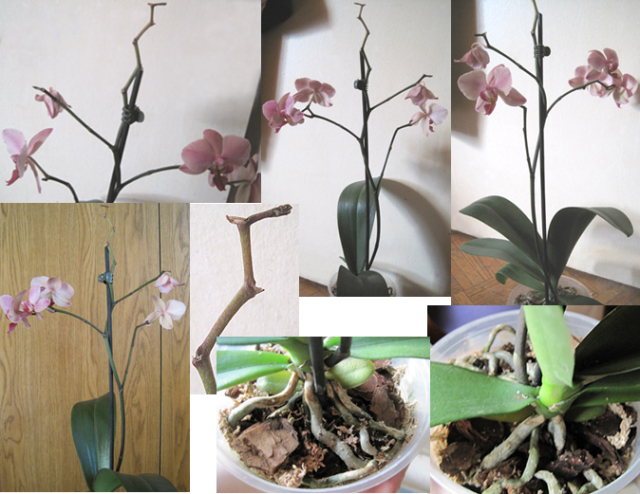Question New Orchid
New Orchid
QUESTION: I just bought this new phalaenopsis orchid from Home Depot on sale for $10. The reason for the price reduction is because the blooms began to wilt on one offshoot of the spike, but two offshoots still have blooms, and altogether it still looks nice!
I want to make sure this one safely ends its blooming period and re-enters it healthy, as my last one did not fair so well (as you know, it nearly died, still in recovery and I'm hoping it will survive).
I've attached pictures that show the entire orchid, it's multiple off-shoot spikes (still has a few blooms, but must be at the end of its cycle as wilting has begun), and a close up of the rooting medium (the moss is only on top, below is all fir-bark).
First, I'm wondering how I should treat the multipe spikes once the blossoms all drop, because I want it to bloom the same way (multiple offshoots in bloom look beautiful), so I don't really want to cut them off... What is the best way to proceed?
I'm aware that it definitely needs to be repotted (the pot is FULLY rootbound), but I won't disturb it until it has completely ended its flowering cycle. Just for my own knowledge, are the open roots at the base okay like that? I'm assuming they are this way because it doesn't seem to have aerial roots now?
I have it in a west-facing window (all windows face west in my apartment), I live in Toronto Canada, the temperature is about 15 C or 59 F daytime, 7 C or 44 F at night. It receives indirect sunlight. I water once a week (or as needed) on and off with fertilizer (19-31-17 from Schlutz), and mist (not the blooms) every other day.
Also, any tips on the current state of my new Phal? How to keep it blooming (if possible), what to change, advice, or general thoughts?
Again, thank you so much for your time and care!
ANSWER: Sophia, great plant rescue. Since You know about repotting, my main concern is the night temperature which is a bit low for phalaenopsis. See if you can raise the night temperature by 10 degrees F. I would not do anything with the flower spike for a while. The spike on one or more of your plants may eventually turn brown and die back, at which time you can remove it entirely. Depending upon the particular hybrid, floral branches could still elongate bringing forth more buds. Each hybrid brings forth surprises in blooming habit so enjoy the adventure. Contingent upon your repotting, the roots look okay.
---------- FOLLOW-UP ----------
QUESTION: Great, I'm glad to hear that! By the way, the temperature I'm referring to is the outdoor temperature, which is likely about 10 F higher during both day and night (sorry, I should've mentioned that). Okay so this one looks fine then? So I can just wait and see what my orchid decides to do with its spike, and follow its path then, correct?? If it should rid itself of the entire spike, is it likely that it will spike and bloom with all the offshoots like it has this time, or is this somehow induced by the caregiver? If it is induced, how so? I also would like to point out that this looks like a keiki plant that was formed not too long ago (still has the bottom baby leaves, which i normally don't see on other orchids, is this a good way to judge age??), so is it possible that this one will too form keikis someday? Thank you!
AnswerThanks for clarifying the temperature readings. If a plant loses its spike, it can send out another spike in the next bloom period. This is why it's so important to give the plant a head start with a fresh potting mix after flowering
Yes, a plant may develop a keiki on its flower spike. Low light conditions can be instrumental in inducing keiki formation. Age is difficult to estimate unless you know how many bloom cycles a plant has been through. Even then, it is difficult to estimate the number of years it has taken a plant to reach blooming size. Keiki formation is very much a function of hormones. It is possible to purchase such a keiki producing hormone in a paste. The node covering is removed, the paste is applied, and the plant moved into the dark for week to induce a keiki.






